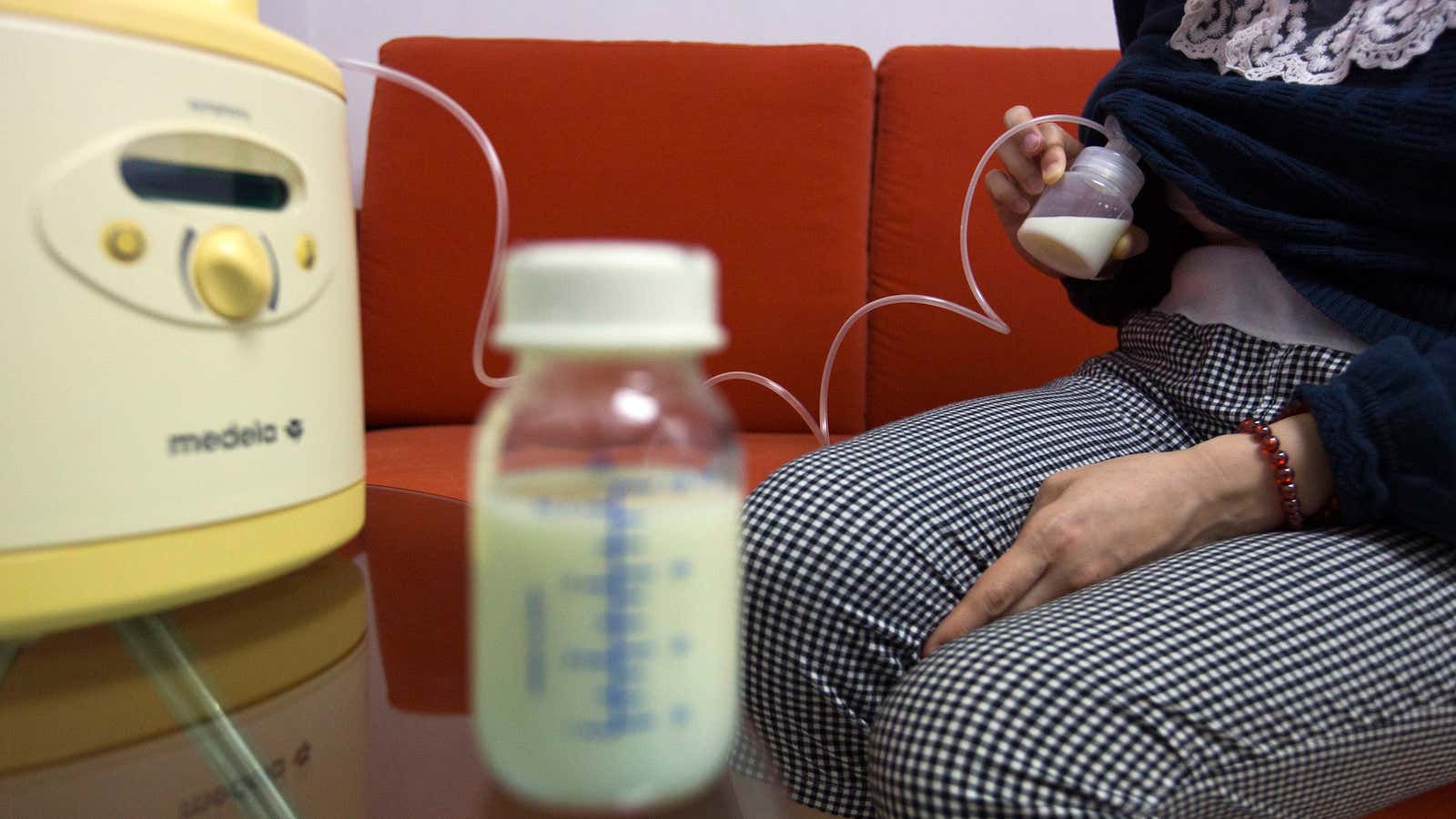Breast pumps suck.
That’s the point, of course. By design, the cones placed over a mother’s breasts are designed to suction out milk. That milk, doctors say, is all a baby needs to be nourished (and protected) for the first six months of her life. For its powers in keeping babies healthy and boosting their immune system, breastmilk is often referred to as “liquid gold.”
Pumping moms call it that for another reason, though. It’s because pumping breastmilk is noisy, painful, arduous, time-consuming, and inefficient. It’s a juggle, both conceptually and physically, of funnels and tubes, bras and bottles, ice packs and power cords.
Yeah, breast pumps really, really suck.
Later this month, the Massachusetts Institute of Technology’s Media Lab plans to do something about it. Its fall 2014 hackathon is devoted to fixing the breast pump, bringing together dozens of engineers, parents, and lactation consultants. In a blog post planning the session, organizers explain their rationale:
breastfeeding is hard: it’s hard to initiate the breastfeeding relationship and it’s also hard to maintain it, particularly for families who live in one of the four countries considered “Maternal Health Backwaters”: Liberia, Papua New Guinea, Swaziland, and the United States of America (yup, the USA is in this group). … The breast pump is a key technology in extending the nursing relationship and providing babies with breast milk for longer. …this is a space that is ripe for further innovation.
The blog post goes on to delve into some elements of pumping that warrant disruption, such as the hard-surfaced nature of the cones cupped over the breasts (versus a soft, cuddly baby) that makes letdown (the process of milk being released) possible. Other flaws: too many parts, social discomfort around pumping, a lack of connection between pumping and data that can be collected, such as how much milk and when.
Many moms have felt this pain at the pump. For the uninitiated, I’m happy to get more graphic. Nearly two years ago, as I ended a year of pumping for my second child, I wrote a piece that describes the actual process:
It’s a battle against biology; a mother’s milk supply dwindles when away from the baby. The only way to keep it up is to express milk at the same times that the baby would normally feed, generally every three to four hours. This can be done manually but is most efficient with an electric pump that relies on horn-like devices cupped over the breasts to suction the milk. It drips out slowly—emptying one breast can take as long as 20 minutes—into a bottle attached to the horns, which is then refrigerated or frozen for baby’s later consumption.
Here are other abysmal qualities for the hackers to think about:
1. Infections. Unlike hospital-grade pumps, the more ubiquitous pumps such as Medela aren’t designed as “closed systems,” so moisture from water or milk can get into the mechanics of the pump and cause mold in the motor and tubing.
2. Single use. This fear of infection makes it hard to share breast pumps from one mom to another. For perspective, breast pumps are expensive. I spent more than $400 on my Medela Pump in Style. And then there are additional, recurring expenses such as storage bags and nursing pads. (To its credit, America’s healthcare system now chips in for a mother’s pump purchase).
3. Discretion. For all the time working and nursing mothers spend tethered to their pumps, all the parts and juggling act mean you really need to be behind closed doors. What if there were a more discreet way to pump?
4. Bras. There are hands-free bras but you really can’t move around or relax while you’re hooked up to them. And they get less … umm … supportive with each wash. Honestly, my work-around was a set of rubber bands hooked up to the horns and strung around the hooks of a nursing bra. Or you take turns pumping with each breast, which is less efficient but at least allows you to turn the pages of a magazine. Speaking of…
5. You need six hands. When you are holding the horns around your breasts, it means limited motion (and productivity) for things like changing the pump speed or typing an email to your boss.
6. All those cords. There are the tubes hooked up to each bottle, the electrical cord to plug the thing in, the car charger when you’re on the road, the wired battery back for when all else fails. Pumping can be as frustrating as stringing Christmas lights—every. three. hours.
7. We need more places to pump. US law mandates large workplaces have a space set aside for nursing mothers to pump but what about airports, museums, malls, even church? As hackers tinker with the actual pump, a quick fix to the problem of pumping would be to get more public infrastructure to support women who want to do right by their babies. For all the lip service and pressure on women to breastfeed, it’s time to do right by them.
